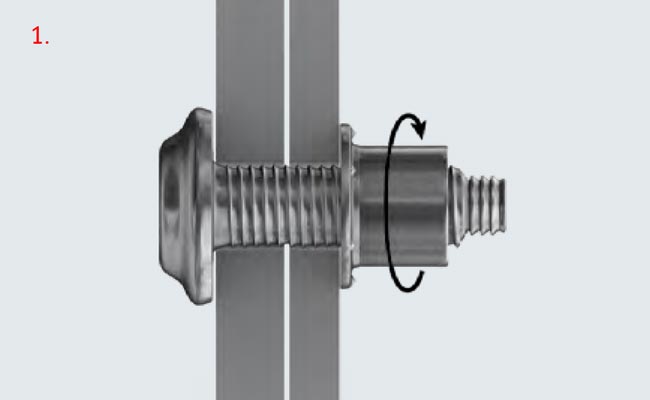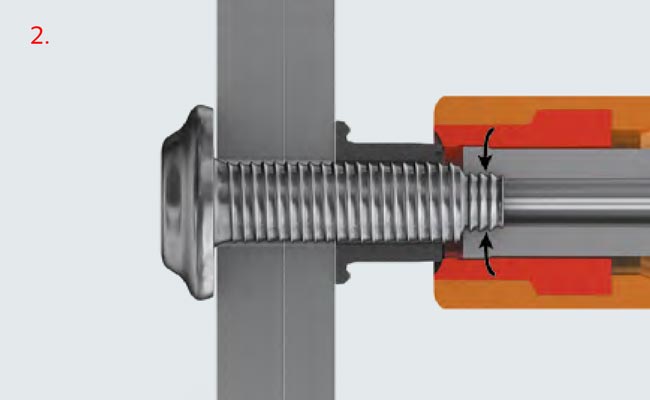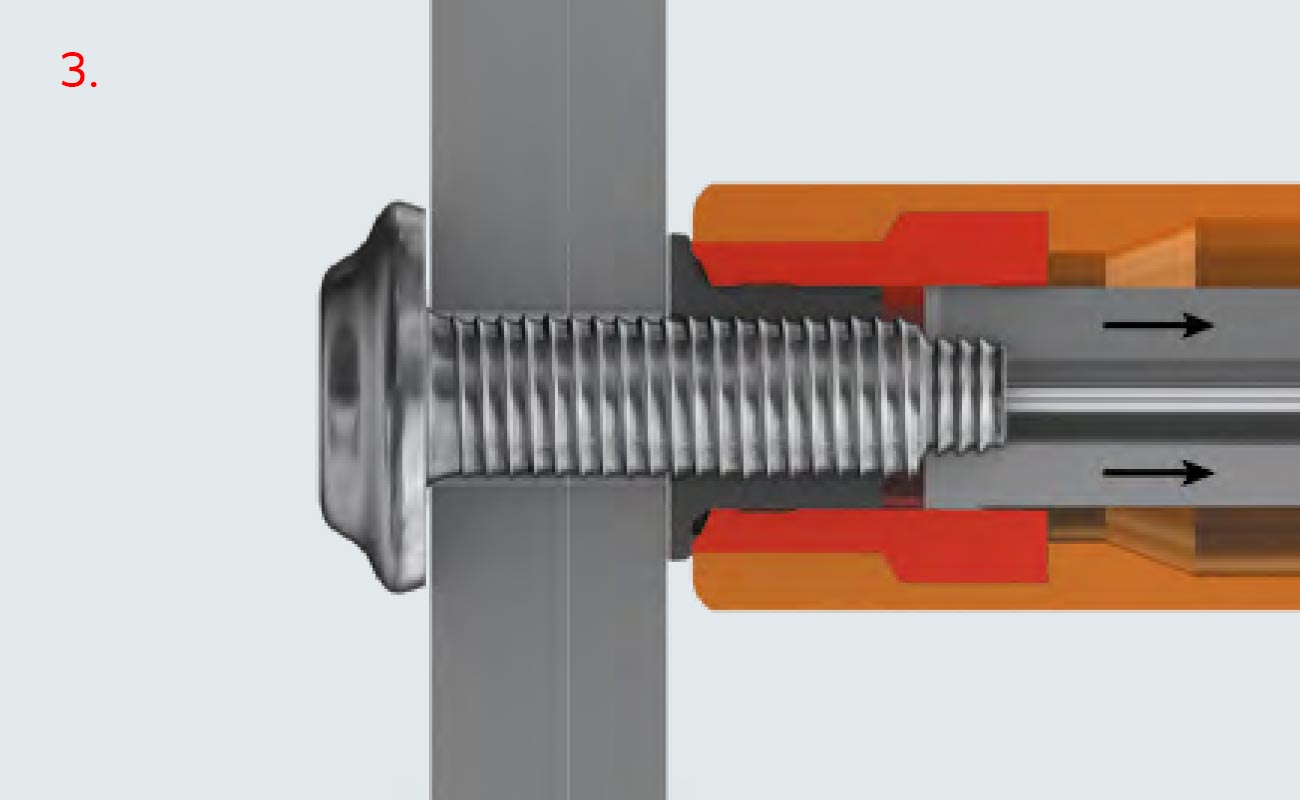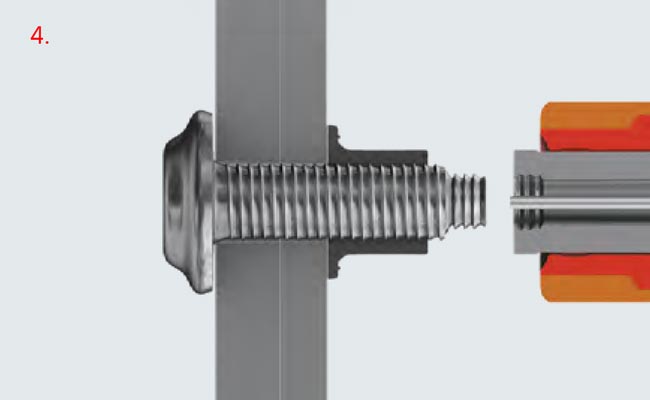Benefits at a glance
- No pintail, no pin break
- Lower material consumption
- Low installation noise, no banging noise
- Increased corrosion resistance
- Pre-assembly possible
- Quick and easy installation
- No installation tool recoil
- No discharged pintails
- No corrosion-prone breakneck grooves
- High-strength, grade 10.9 fasteners
- High-quality, corrosion-resistant coating systems possible
- Installation indicator on collar for visual installation inspection
Installation steps
- Pre-assembly: The pin is inserted into the prepared hole, and the collar is rotated onto the pin.
- The nose assembly is applied to the pin grooves: The tool is applied to the annular pull grooves and trig- gered. A puller in the nose assem- bly draws the pin into the tool. The anvil presses the collar against the pin and tension loads the joint.
- As the nose assembly continues to pull, the anvil swages the collar. The material flows into the lock grooves, with part of it also being pressed towards the component. This significantly increases the clamp force between the two components.
- The anvil retracts and the jaws are released. The swaging of the collar is complete. The tool ejects the fastener. The installation sequence is complete.




